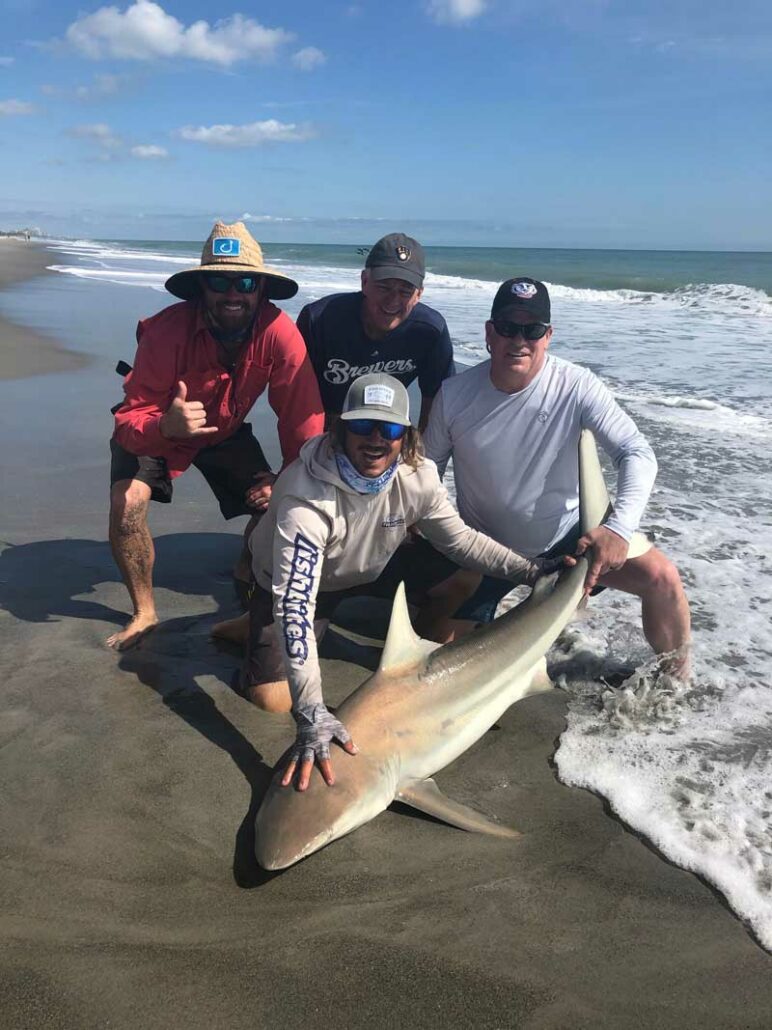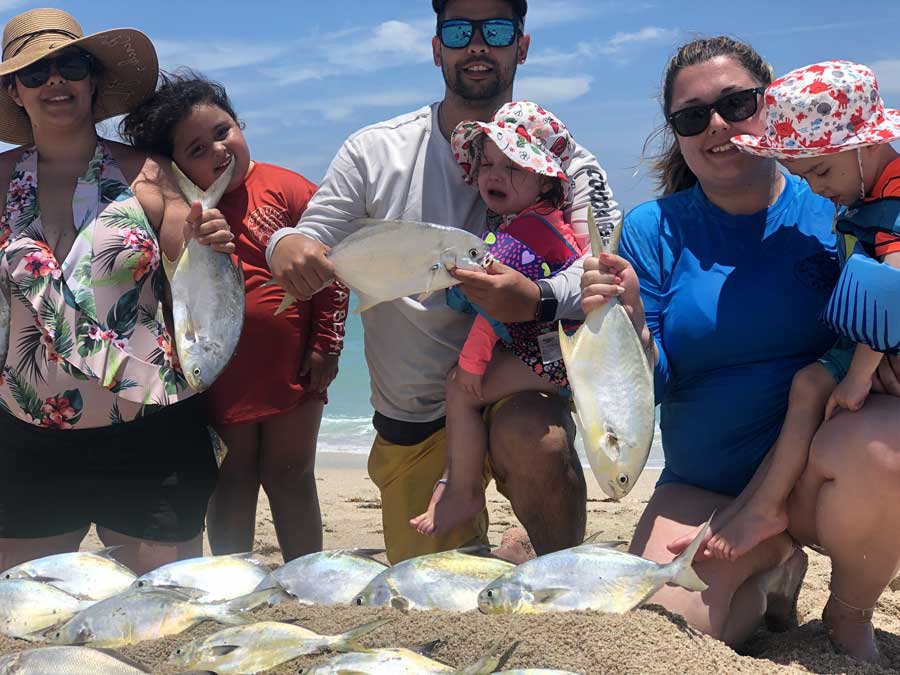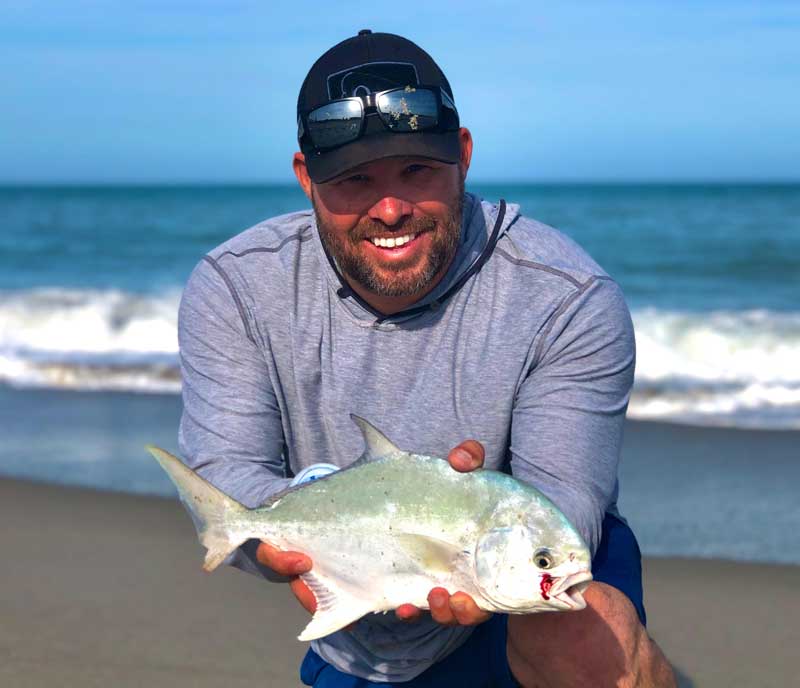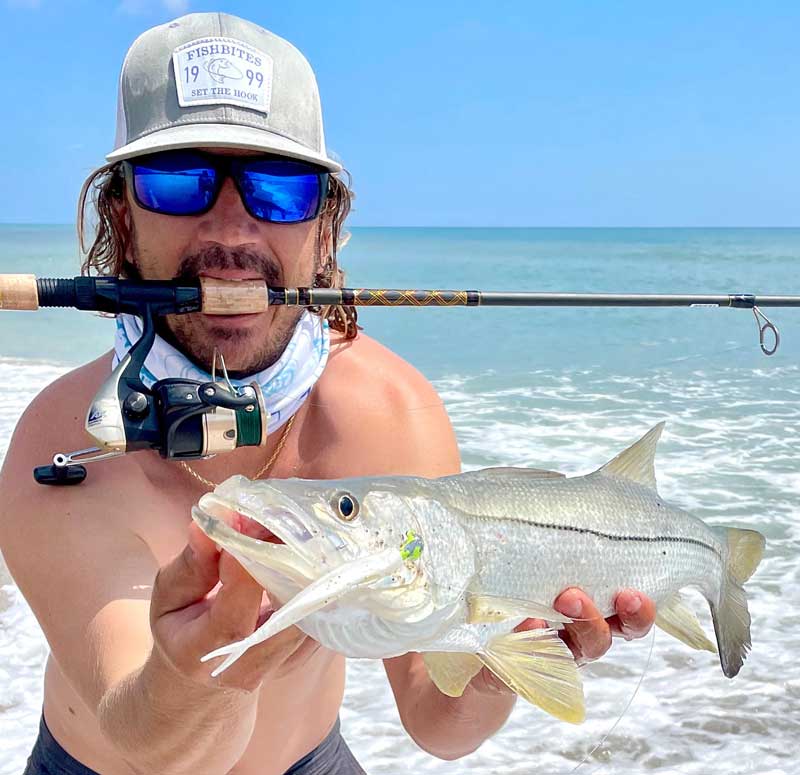
May and June mark the seasonal species changing of the guard along the Central East Coast of Florida. Meaning, summertime surf fishing translates to big fish with early morning and late afternoons providing the best conditions. With the heat of the day causing a slowing of all species and activity it remains vital to hit the surf in the coolest periods of the day. Look for giant snook and tarpon to be active feeding on baitfish in the near shore troughs and beyond the sandbars. The best methods to target these trophy fish will be illustrated in the text below.
While the central focus of summertime surf fishing will be headlined around snook and tarpon. It’s important to understand there is still a good quality bite for pompano, whiting and sheepshead. With that being said, our go to setup for fishing the beach this time of year consists of a diversified setup. Typically we prefer to run 3-4 standard pompano rigs casted at various distances from the shore, targeting pompano and whiting along with the other species. In addition, we will run 1-2 live baits setups with mullet, croakers or chunked bait casted in the first or second trough. Lastly, we employ a light action casting rod worked along the shoreline with a bucktail, diving plug, or swimbait.

The pompano run has continued to impress local anglers with the run providing an extended version that keeps the fun coming. Mid tides have been best with the water clarity and seaweed. Various floats and multicolored beads are the key to success. Note it’s important to learn to tie pompano rigs. For those using store bought rigs, you are at a serious disadvantage. Because you can’t adapt and run diversified setups with store bought rigs. For example, we constantly tie specific customized rigs based on the daily conditions. This will lead to exponentially higher catches.

Diving deeper into the targeting techniques for snook and tarpon, we will discuss how these species react to various presentations. There’s three main techniques that prove most effective for catching snook and tarpon from the beaches along the Space Coast. Firstly, soaking live baits on a fishfinder rig in the first or second trough gives one the ability to work multiple rods simultaneously which increases the opportunities. Fish finder rigs consist of a one to three ounce weight, a one to two foot 40lb fluorocarbon leader and a 3/0–5/0 circle hook. Hook mullet, croakers or threadfins in the nose or anal fins for best presentation.

Secondly, one of my personal favorites is casting live baits in the breaking waves along the shore. This method imitates a confused baitfish being washed in and out from the beach. In turn, causing nearby ambushing species lurking in the first trough to take notice and pounce on the opportunity. The fun part of this style is actively working the shoreline with repetitive casts and presentations. Not to mention when strikes occur it can be right at your feet in ankle high water. There’s nothing like seeing a giant snook go airborne on your bait just fingertips away from you. Then the battle ensues on light tackle gear.
Lastly it’s the gorilla style approach of light tackle equipment with a small case of lures and lots of walking along the shore edge. This method is all about finding the fish and not waiting for them to come to you. Using swimbaits, diving plugs and bucktails you’ll work the shorelines casting 45 degrees out and retrieving them while maximizing the presentation in the troughs where these fish will be most concentrated. Casting in this regard isn’t for the faint of heart as you can ensure there’s a lot of walking and a lot of casts. But understand the reward that comes when the startling strike ignites your adrenaline with a leaping tarpon or drag screaming snook.


Leave A Comment
You must be logged in to post a comment.